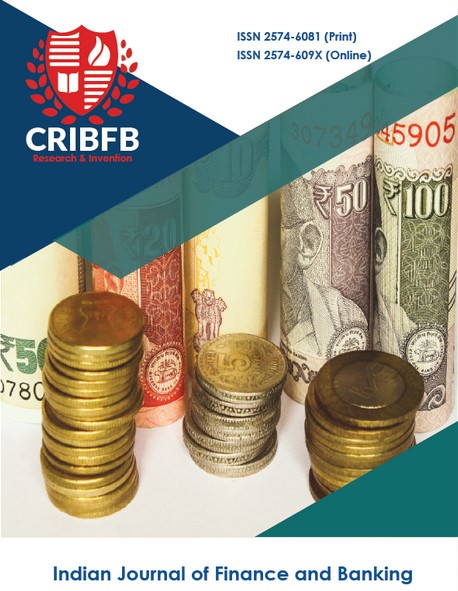VALUE-AT-RISK BASED APPROACH FOR CURRENCY HEDGING
Main Article Content
Abstract
Corporate FX risk management has gained complexity with an increased number of currencies involved and varying correlations among them. Existing literature has highlighted the need to account for cross-currency correlations when optimizing hedge ratios for portfolio management (Dowd, 1999). In this paper, we propose a Value-at-Risk (VaR) based model to estimate the optimal hedge ratio for a multi-national corporate that aims to minimize the cost of hedging at a given tolerance level of expected loss arising out of FX movement. The paper illustrates both parametric and historical methods of VaR estimation at a portfolio level as the first step in risk management. As a second step, an efficient-frontier is derived based on the expected VaR level at various hedge ratios and compared with associated hedge cost. The benefits of this approach include: identification of net exposures after correlations among currencies are accounted for in order to avoid duplication of hedges, and condensation of the parameters governing hedging decision into a single, intuitively-appealing number. The paper also highlights the need to frequently update the model’s assumptions as currency correlations and corporate exposures remain dynamic.
JEL Classification Codes: C10, F31, G32, M20.
Downloads
Article Details
Section
How to Cite
References
Bauwens, L., Ben Omrane, W., & Rengifo, E. W. (2006). Intra-daily fx optimal portfolio allocation. Available at SSRN 912697.
Chen, W., Kritzman, M., & Turkington, D. (2015). Alternative Currency Hedging Strategies with Known Covariances. Journal of Investment Management, 13(2), 6-24.
Copeland, T., & Copeland, M. (1999). Managing Corporate FX Risk: A Value-Maximizing Approach. Financial Management, 28(3), 68-75.
Dowd, K. (1999). A value at risk approach to risk-return analysis. The Journal of Portfolio Management, 25(4), 60-67.
Dufey, G., & Srinivasulu, S. L. (1983). The case for corporate management of foreign exchange risk. Financial Management, 12(4), 54-62.
Hendricks, D. (1996). Evaluation of value-at-risk models using historical data. Economic policy review, 2(1), 39-69.
Huisman, R., Koedijk, K. G., & Pownall, R. (1998). VaR-x: Fat tails in financial risk management. Journal of risk, 1(1), 47-61.
Morgan, J. P. (1996). Riskmetrics technical document.
Marshall, C., & Siegel, M. (1996). Value-at-Risk: Implementing a risk measurement standard.
Nain, A. (2004, March). The strategic motives for corporate risk management. In AFA 2005 Philadelphia Meetings
Rockafellar, R. T., & Uryasev, S. (2000). Optimization of conditional value-at-risk. Journal of risk, 2(3), 21-42.
Smithson, C., & Simkins, B. J. (2005). Does risk management add value? A survey of the evidence. Journal of applied corporate finance, 17(3), 8-17.




